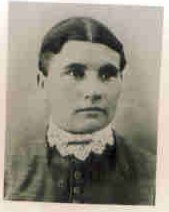Some information may be outdated.
Throughout Women’s History Month, the Moab Museum is digging into the collection to highlight stories of women, women’s movements, and the individuals who built the economy and community in what became the city of Moab.
This week, Museum staff focus on Sarah Jane Stewart, affectionately known as “Aunt Sarah”—Moab’s first doctor, nurse, and midwife, the only settler medical practitioner for hundreds of miles.

Sarah was born on October 14, 1848, in Missouri. Shortly after her birth, her family moved between Salt Lake City and Idaho before finally settling in Randolph, Utah. It was there that Sarah met and married her husband, Bishop Randolph Stewart, the man the town was named for. Bishop Stewart and Sarah moved to Moab in 1880 so he could serve as the bishop of the Moab Ward of the Church of Latter-day Saints, a position he would hold for 17 years.
Their home, which came to be known as “Stewart’s Corner,” was located at the intersection of Main & Center Street. The Moab Museum’s walking tour, “Livestock Built This City,” stops at the location, which is today the Wells Fargo Bank. Sarah’s home served as her base of operations as Moab’s first medical practitioner, which would be today called a midwife. She provided services to all who needed them prior to the arrival of Dr. J.W. Williams in 1897. Sarah would continue to serve as a midwife and nurse throughout her life in Moab.
She eventually sold a portion of Stewart’s Corner to D.L. Goudelock and the land became the First National Bank of Moab and the Grand Publishing Co. & Grand Valley Times office. Aunt Sarah died from stomach cancer in March 1922, having lived a life of service in Moab and the Grand Valley.
The Moab Museum is dedicated to sharing stories of the natural and human history of the Moab area. This is part of a series highlighting photographs and stories of downtown Moab over time. To explore more of Moab’s stories and artifacts, find out about upcoming programs, and become a Member, visit www.moabmuseum.org.
Appreciate the coverage? Help keep local news alive.
Chip in to support the Moab Sun News.




